
Rediscovering Japan

Rediscovering Japan
Travel (Katori/Itako)

by tomizuta
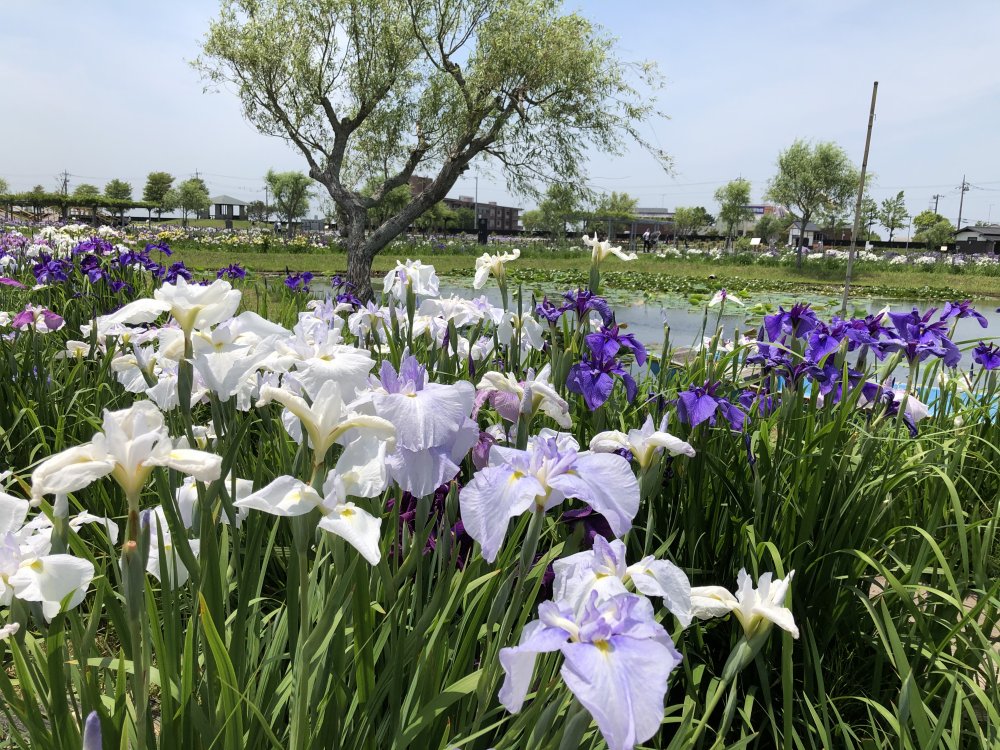
With the lifting of state of emergency for the coronavirus pandemic, we made a short excursion to Katori City. The iris (Hanashoubu) at Suigo Sawara Ayame was in full bloom.
On May 25, 2020 the Japanese government lifted the declaration of the state of emergency in the remaining prefectures of Tokyo, Kanagawa, Chiba, Saitama and Hokkaido. The government issued a revised Basic Policies for Novel Coronavirus Disease Control laying down guidelines and stages for restarting socio-economical activities under which nation-wide travel including to and from the last five prefectures will not be restrained from June 19th as long as the pandemic continues to be under control. I had given up my domestic travel to rediscover Japan since March, but given the lifting of the state of emergency in Chiba where I reside, I decided to resume my travel starting from a short excursion in nearby areas. On top of its historic heritage of the merchants and distribution function to Edo by riverboats, Sawara Town in Katori City is well known for its iris park which reaches full bloom in June.
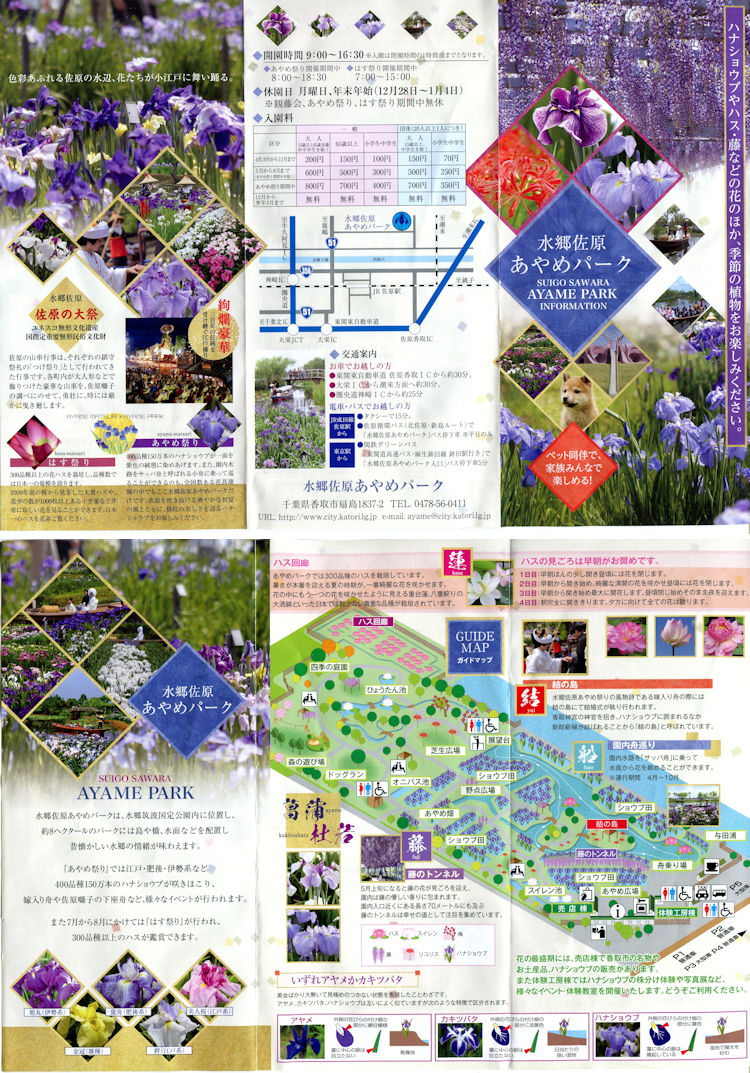
The pamphlet of Suigo Sawara Ayame Park. The map of the park in the lower leaf.
Sawara is located only a two hours’ drive northeast from Tokyo, and less than an hour’s drive north from Narita. I started my excursion by visiting the Otone Branch of the Chiba Prefectural Natural History Museum located in Sawara adjacent to the iris park. The visit to the museum which features history, nature and life in the area was quite informative. I learned for the first time that Lake Kasumigaura in Ibaraki Prefecture which is the second largest lake following Lake Biwa, Lake Kitaura, Lake Nishiura and some other remaining lakes in the area including Lake Yodaura which is by the museum and iris park were once all part of a much larger inland sea or lagoon called Katori-umi (Katori Sea). The sea shrunk to its current state due to the sediments from the rivers from the western mountains as well as reclamation efforts. The museum and iris park are on a region reclaimed in the Edo era. Unfortunately English description was quite limited.
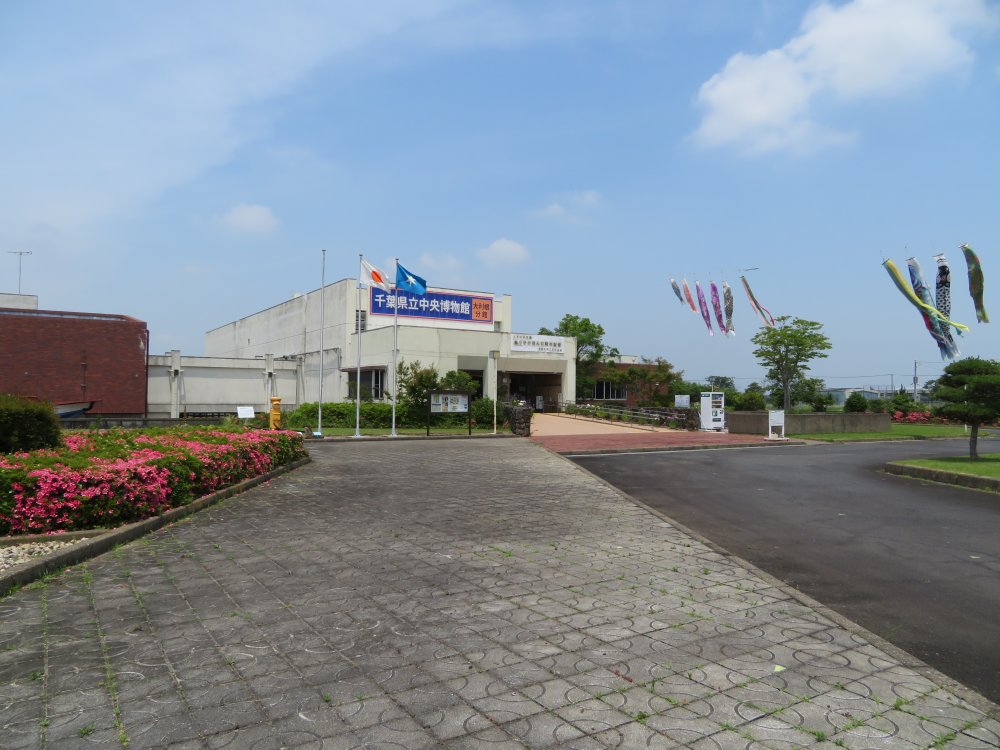
Otone Branch of the Chiba Prefectural Natural History Museum located in Sawara adjacent to the iris park. The visit to the museum which features history, nature and life in the area was quite informative.
We next visited Suigo Sawara Ayame Park, which is a municipal park of Katori City and so renamed in 2017. It was formerly a botanical municipal park of Sawara City which was merged into Katori City in 2006. It has a size of about 80,000 square meters with 1.5 million irises of 400 varieties, making it one of the largest and most popular iris parks in Japan. We had to have our temperature checked in front of the ticketing office.
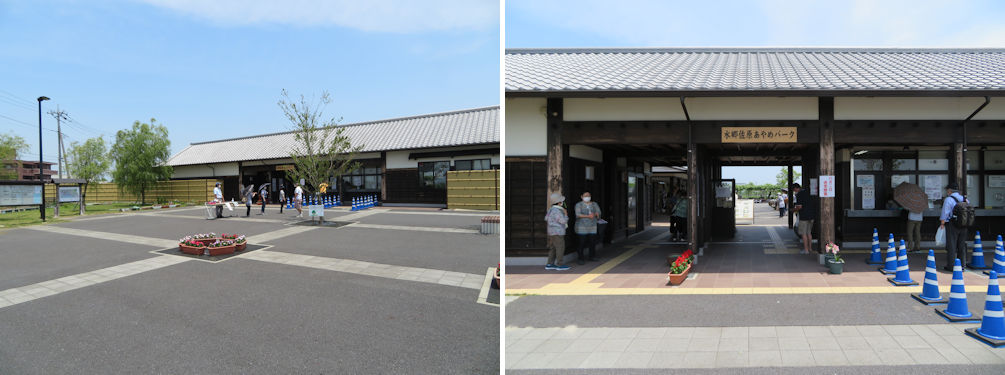
Visitors to the Ayame Park had to have their temperature checked in front of the ticketing office (left). The entrance gate (right). The park had reopened only a week ago.
We paid the admission fee of 600 yen (500 yen for those above 65) and entered the park. We had been advised to wear masks but also that we could take them off as long as we kept social distance from other guests. For a week day, there was a reasonable turnout of visitors, but it must have been a far cry from the visitors that could be expected during the Ayame Festival period canceled this year for the coronavirus. There were some gift shops and food stall immediately after the entrance gate. We could command a good view of the entire park from the entrance plaza named Ayame Hiroba (plaza).
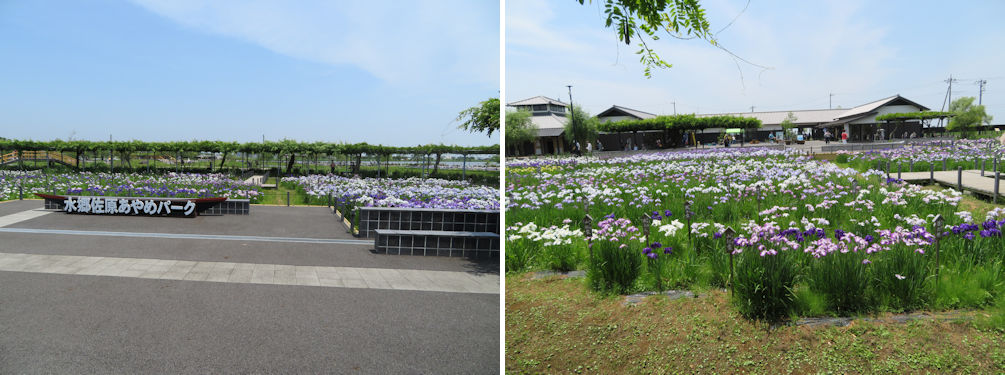
We could command a good view of the entire park from the entrance plaza named Ayame Hiroba (left) and view of the entrance area with the gift shops in the far back from the opposite side of the park (right).
To the right was a boat pier offering a 20 minutes’ boat cruise through the marshes which allows you to appreciate a great view of the irises at eye-level. The cruise runs every thirty minutes with a lunch break between noon and one pm at a price of 500 yen. The cruise with the boat lady in her pretty kimono attire and straw hat is a classic feature of this park. It was a very warm day especially wearing a mask. We decided to skip the cruise and made a right through a corridor of wisteria which must be beautiful at the flowering period of early May. We enjoyed the view of the irises called Hanashoubu of various varieties planted in rows. I understand that various types of Hanashoubu have long been cultivated from the wild Nohanashoubu for gardening. For instance, the Edo variety were cultivated originally in Horikiri in Tokyo from the Edo era, hence they received the naming Edo variety.
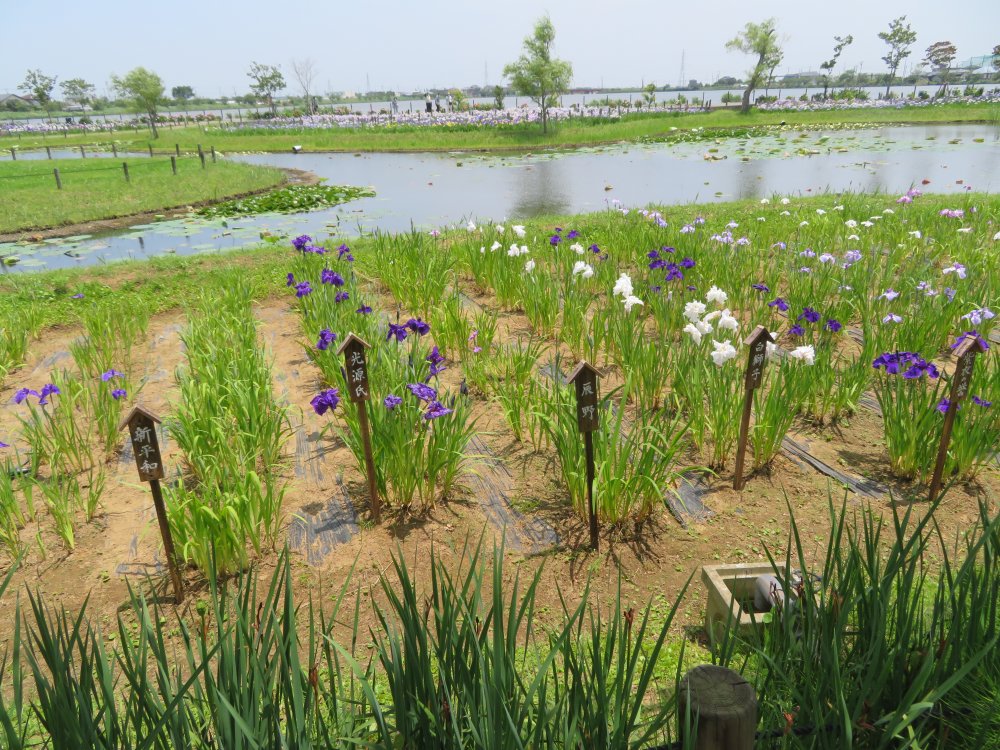
We enjoyed the view of the irises called Hanashoubu of various varieties planted in rows. The row of purple irises on the right edge are of the Shiinomurasaki (pride of purple costume) of the Edo variety and the row of purple irises on the left called Hikarugenji (the main character in the Tale of the Genji) of the Higo (Kumamoto) variety.
Following the guide map we received at the entrance gate, we went further
northeast to seek another iris variety called Ayame. I had thought it would
be easy to spot the Ayame as they grow in fields rather than by the water,
but found it impossible to distinguish them as all the flowers looked so
much the same at least to me.
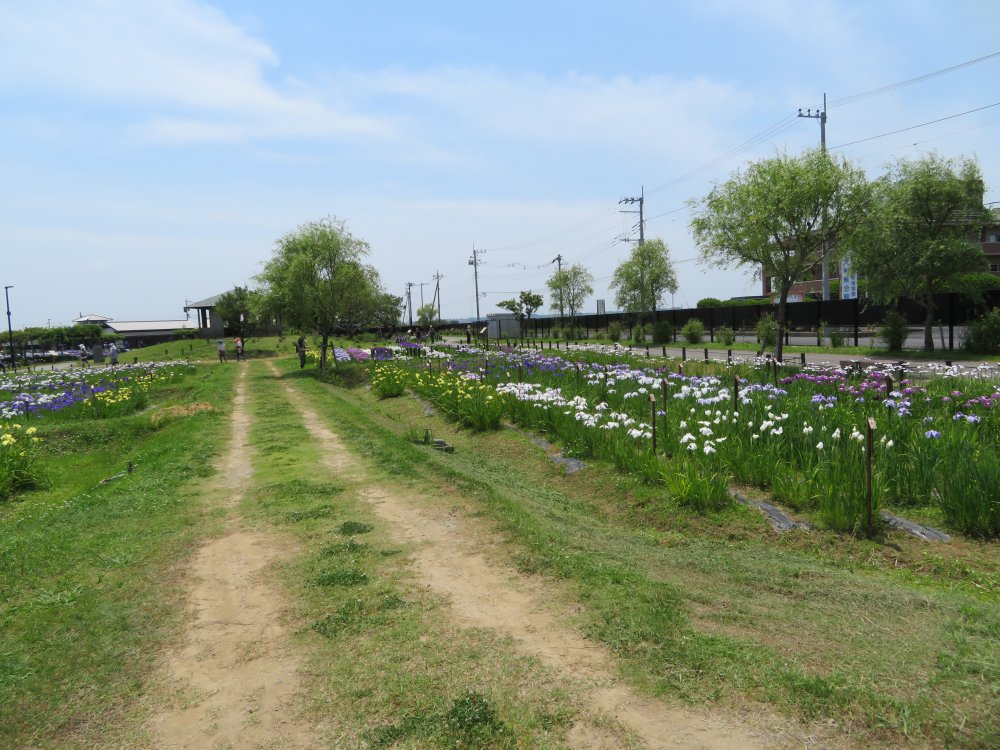
I had thought it would be easy to spot the Ayame as they grow in fields rather than by the water, but found it impossible to distinguish them as all the flowers looked so much the same at least to me.
We then went west to climb up to the observatory deck. This was a great spot to enjoy a view of the entire iris park as well as Lake Yodaura by the park. We noticed the cruise boat with the boat lady just passing by.
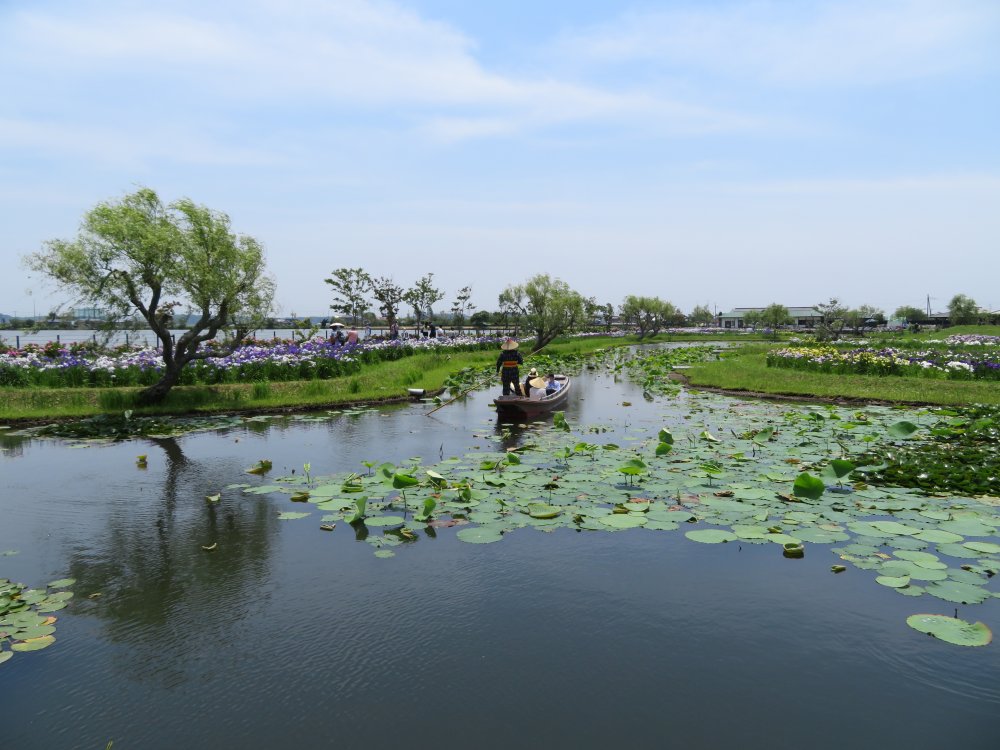
You can enjoy a view of the entire iris park as well as Lake Yodaura from the observatory deck.
We went through another stretch of Hanashoubu by the lake to return to the boat pier and entrance area. The time spent at the park was slightly over an hour.
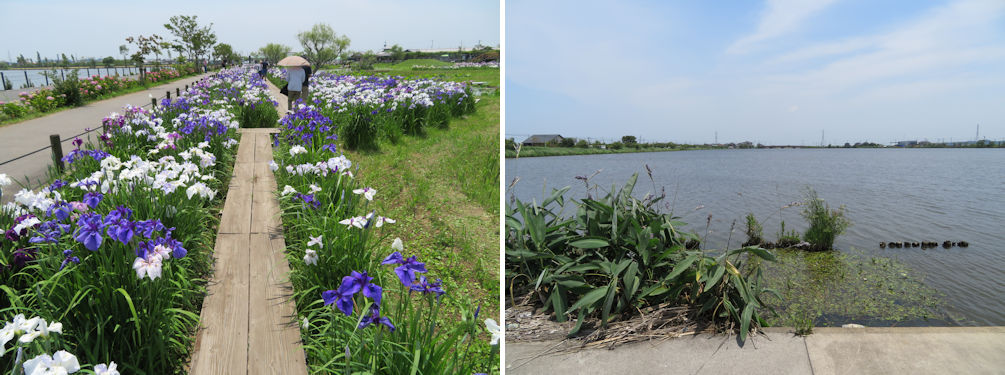
We went through another stretch of Hanashoubu (left). Looking out towards Lake Yodaura (right).
It was time for lunch, so we left the iris park in Katori City for Itako City which is on the other side of River Tone. There are so many restaurants in this area specializing in river and lake fish. We visited one of them with good reviews in Itako City. We were saddened to see on the way that a prominent old ryokan had closed permanently in the last couple of weeks no doubt due to the pandemic during which most hotels and ryokans in tourism areas had to be closed. The restaurant car park on the opposite side of the road was quite full, but we were lucky to be immediately shown a tatami space close to the entrance.
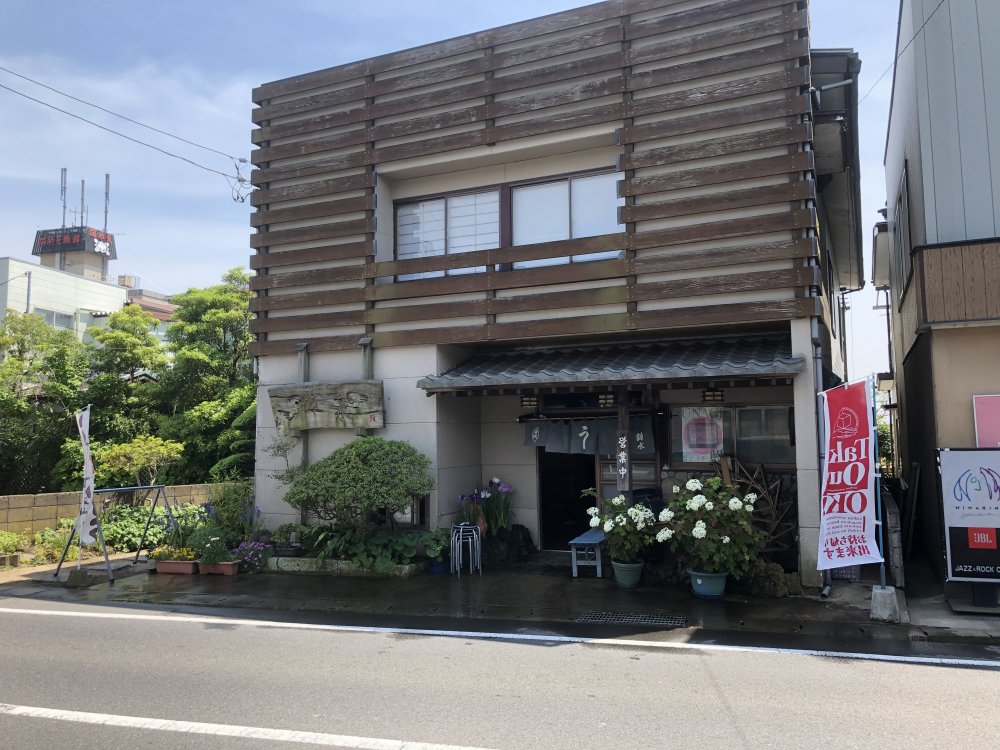
There are so many restaurants in this area specializing in river and lake fish.
It was already past one pm and guests were starting to leave which made us feel comfortable enough with a reasonable distance between the guests. We ordered broiled eels and deep fried wakasagi (a lake fish resembling whitebait). I was happy enough with the wakasagi that came first and even more delighted with the broiled eel that followed. The eel was tender and delicious with a Kanto taste which is less sweeter than Kansai style. I thought the total bill for the food including one non-alcohol beer was very reasonable.
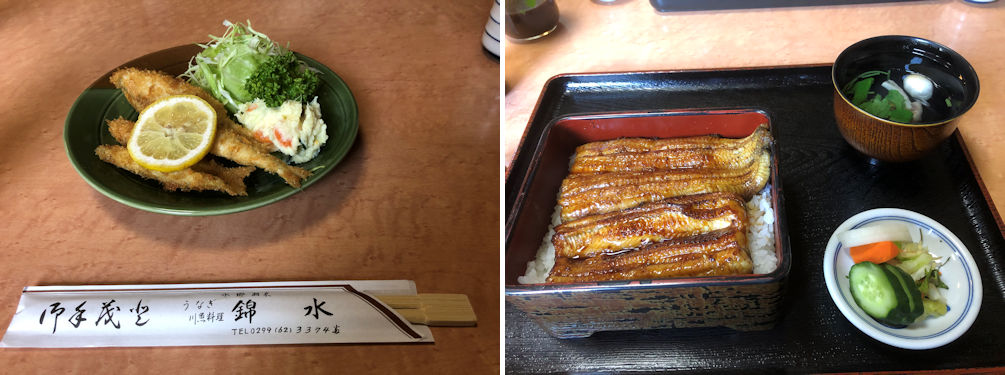
I was happy enough with the wakasagi that came first (left) and even more delighted with the broiled eel that followed (right).
We then went to visit Suigo Itako Iris Park, which is a municipal park open to everybody with no admission fee. The park is located on the eastern river bank of Maekawa River (a short river of three kilometers connecting Lake Kitaura and River Tone) as it joins River Tone. It has a size of 18,000 square meters, much smaller than the iris park in Sawara. Although canceled this year, a month long iris festival is held in May to June with various attractions including boat cruises. There was no car park so we parked in one of the toll car parks nearby. Visitors were sparse as there were no events and the boat cruise from the boat pier in the park was not running. It didn’t take us long to circle the park but it still was a worthwhile visit to enjoy the irises in full bloom.
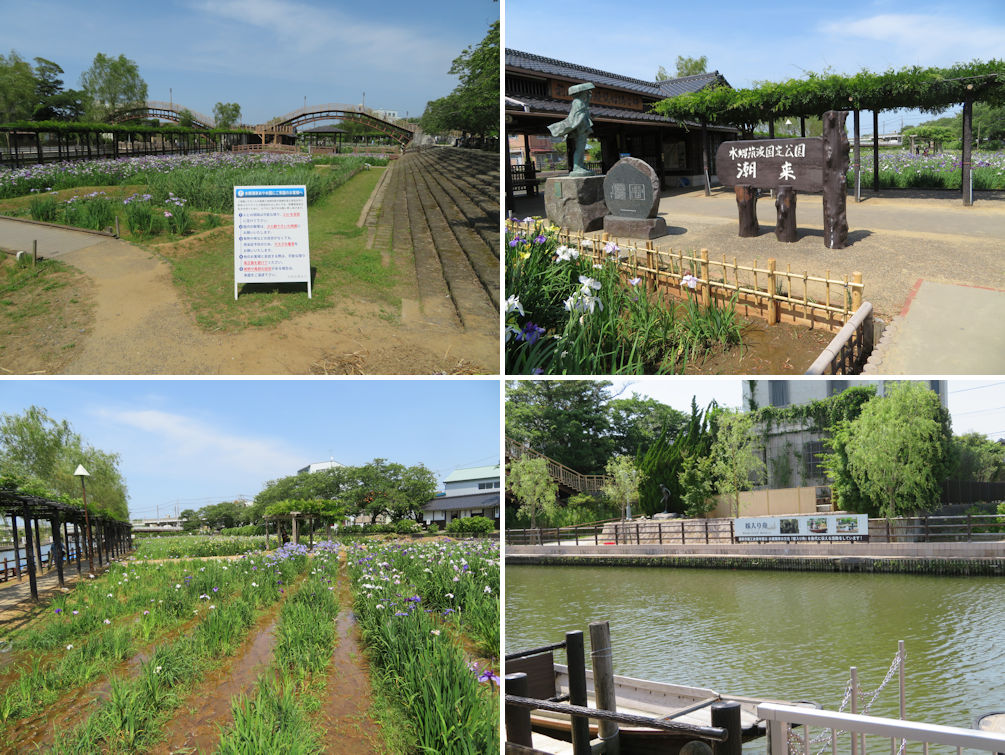
There was a sign with precautions for the coronavirus at the southern entrance to the park (upper left). The boat pier on the left was closed (upper right). View of the irises heading further to the north (lower left). The Maekawa River from the park side (lower right).
After the park I visited the only sake brewery in the city founded in 1804 he late Edo period. This brewery offers a guided tour of the brewery. Unfortunately I was told that it was not available on the day of our visit due to an ongoing filtration process. I learned their regular sake has added sugar which does not suit my taste so I bought their Junmai (pure rice) sake with their traditional logo (I tried the sake later, and found it rather thicker and sweeter than the type I enjoy. Perhaps goes better with food with a thicker taste). Although the shop lady suggested that we visit a nearby temple to view the hydrangea, we thought best to leave it for the next opportunity as we were already quite exhausted because of the heat. In any event it was a very enjoyable experience after staying at home for the last several weeks.
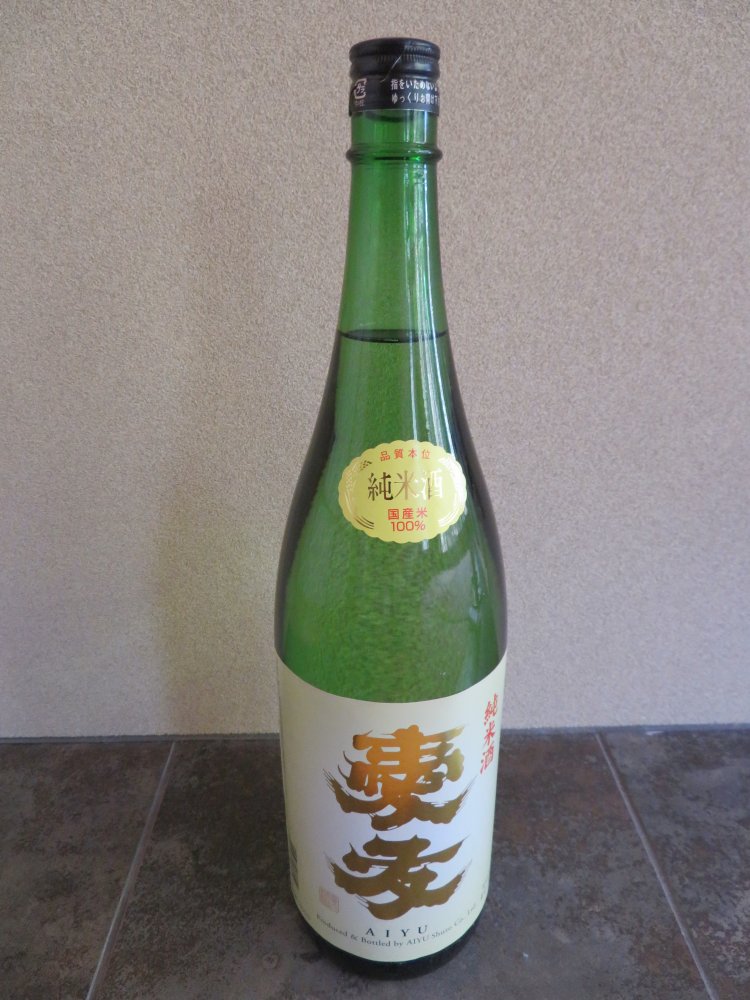
I bought their Junmai (pure rice) sake with their traditional logo "Aiyuu".